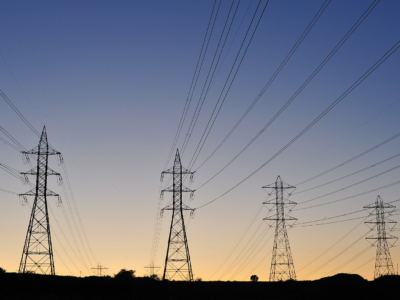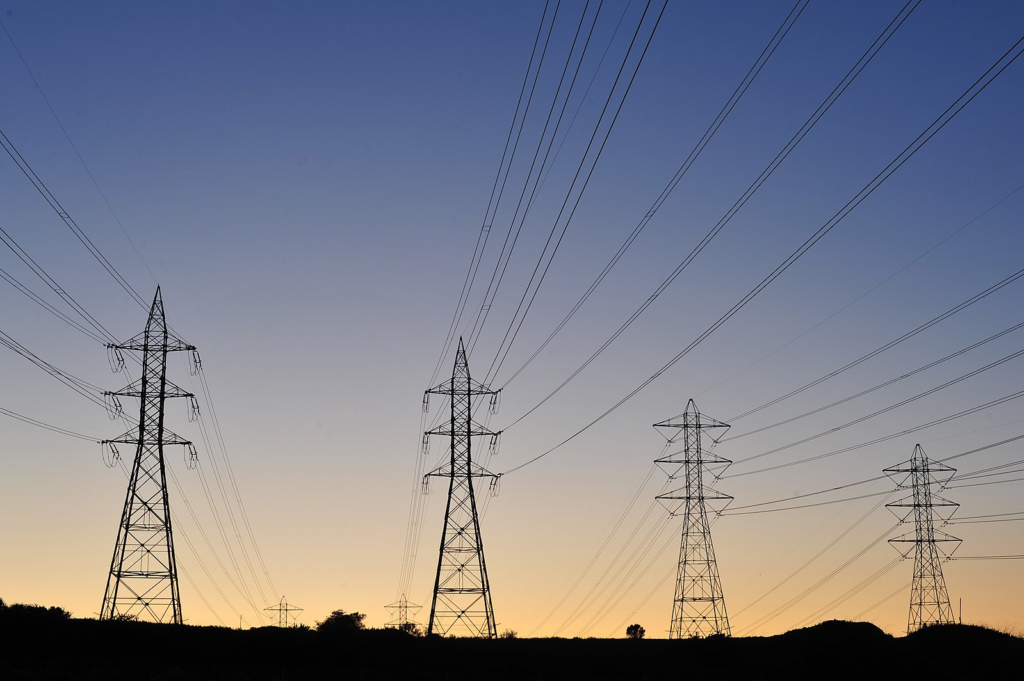Western States Should Opt In to Regionalized Electricity Markets
Legal Planet: Environmental Law and Policy 2024-05-07

 Chris Hunkeler, Wikimedia Commons
Chris Hunkeler, Wikimedia CommonsIn the West, the benefits of electricity market regionalization appear more attractive than ever. “Regionalization” refers to efforts to expand coordination between Western states to buy and sell wholesale electricity through centralized federal power markets. Increased coordination, made possible through regional transmission organizations (RTOs – independent non-profit organizations that operate the grid and oversee the operation of centralized energy markets), has the potential to enhance grid reliability while reducing costs and emissions. Currently, although RTOs are common in the East and Midwest, the California Independent System Operator (CAISO) is the only RTO in the West, spanning most of California and part of Nevada.
In the spirit of regionalization, CAISO is expanding the geographic territory of its existing federal power markets into additional Western states. In 2014, CAISO expanded the territory of its real-time market, through which utilities can buy small amounts of electricity to correct real-time fluctuations in customer demand and electricity dispatched by generators. CAISO has recently initiated efforts to also expand the territory of its day-ahead energy market, which provides utilities with power to serve a portion of their forecasted customer demand for the following day. This market is expected to begin operating in 2026. In the long term, Western states have started collaborating on a vision to form a new multi-state RTO in the West. These efforts are called the “West-Wide Governance Pathways Initiative.”
Studies in recent years indicate that expanding the geographic territory of the Western federal power markets would yield numerous benefits. Centralizing wholesale electricity transactions across a broader territory would improve grid reliability, lower costs for consumers, and increase use of clean energy technologies – even without building new generation or transmission infrastructure. Cost saving from improving market coordination could add up to $1.2 billion annually and reduce yearly carbon emissions by almost 3 million metric tons – the equivalent of removing over 600,000 vehicles from the roads. Creating a new multi-state RTO would amplify these benefits. One study estimated that the production cost savings realized in a single West-wide RTO would be almost eight times greater than a West-wide day ahead market alone.
In the face of ambitious clean energy goals and electrification goals, these benefits are attractive – even essential – to many Western states. California, Washington, and New Mexico each have deadlines of 100 percent clean energy by 2045; Oregon has established ambitious greenhouse reduction targets; and other states, including Nevada and Colorado, have set Renewable Portfolio Standards requiring utilities to procure a certain percentage of their electricity from renewable sources. Expanded regional cooperation in the wholesale electricity markets can help states achieve these goals. Western states must decide if they want to participate in the expanding CAISO markets as well as a potential future RTO.*
However, while regionalization offers many benefits, it also comes with legal and policy risks for states. CAISO and all RTOs, including a potential future RTO, fall under the jurisdiction of the Federal Energy Regulatory Commission (FERC). Any states participating in these markets or a future RTO would be subject to federal jurisdiction related to the electricity markets and other RTO operations. States must determine if their authority over the electricity sector would suffer by participating in these expanded federal markets. For example, participating in federal markets may reduce state autonomy over electricity sector policy or expose them to risks that federal law would preempt state laws.
In a forthcoming paper, I explore how and to what extent joining federal regional markets or a multi-state RTO would expose states to jurisdictional risk due to increased federal control at the expense of state authority. A survey of over 400 recent FERC and federal Circuit Court cases dealing with jurisdictional concerns illuminates three key risks to state authority that could arise from regionalization:
- Risk #1 – Policy Risk: Federal jurisdiction over electricity markets may interfere with the effectiveness of state clean energy policy in some circumstances;
- Risk #2 – Autonomy Risk: Federal jurisdiction can restrict state autonomy over behavior of in-state energy resources; and
- Risk #3 – Preemption Risk: Federal rules may preempt state law.
The paper analyzes each of these risks in the context of Western regionalization and concludes that none poses a significant threat to state authority.
Policy risk poses the biggest risk to states; the survey revealed numerous federal market rules in recent years that reduced the effectiveness of state clean energy policies, including financial incentives for preferred generation resources (e.g., renewables). While this raises significant concerns, such rules have been confined to only certain types of electricity markets – capacity markets (in which generators commit generating capacity for future years) rather than energy markets (in which generators commit to supply electricity to the grid the next day or hour). CAISO does not operate a centralized capacity market, and developing one as part of a regional RTO has not historically been supported by Western states. Thus, the risk of federal jurisdiction interfering with Western state clean energy policies through capacity market rules is low.
Autonomy risk may present limited risk for some states. Recent federal rules require that certain electricity resources – including storage resources (i.e., batteries) and aggregations of distributed energy resources – be able to access the federal power markets, even if they must use state distribution systems to do so. Accordingly, states participating in federal electricity markets cannot bar these resources from accessing the federal markets. While states cannot restrict these resources from accessing wholesale markets, they remain free to incentivize preferred generation resources in many ways: resource procurement programs, permitting and land use decisions, and financial incentives for preferred resources. Accordingly, the risk associated with these rules is also low.
Preemption risk presents the lowest risk for states: that the federal government’s exclusive jurisdiction over regional electricity markets may expose participating states to increased risk of preemption. For example, state policies that set the terms of wholesale market transactions or otherwise touch market operations may run afoul of federal jurisdiction and be preempted. Expanding the territory of the federal markets, which increases the volume of federal electricity transactions taking place, may create more opportunities for federal preemption. However, states not currently participating in federal markets likely do not have policies touching wholesale markets. Those that do participate are already monitoring these risks. And importantly, the case survey does not indicate that the risk of federal preemption has increased. Accordingly, the paper concludes general preemption risks are low, although individual states considering joining Western regional markets should audit their state policies to ensure they would not infringe on the federal markets, in order to avoid federal preemption.
Based on these findings, I conclude that Western states do not face a significant risk of losing their authority over state electricity decisions by either joining one of the CAISO markets or taking part in a future multi-state RTO. While each state must conduct a case-by-case analysis of the risks of regionalization, this analysis indicates that they likely do not outweigh the potential benefits to grid reliability, ratepayers, and the climate.
Kelly Cook is a Berkeley Law J.D. Candidate (‘24)
*Utilities and states are involved in decisions to join federal electricity markets. Decisions to join the CAISO expanded electricity markets are initially made by individual utilities. In some states, state public utility commissions must also approve the utility’s participation before it becomes official. Individual utilities also determine if they want to join RTOs. Typically, states require approval of the state public utilities commission before a utility can join.